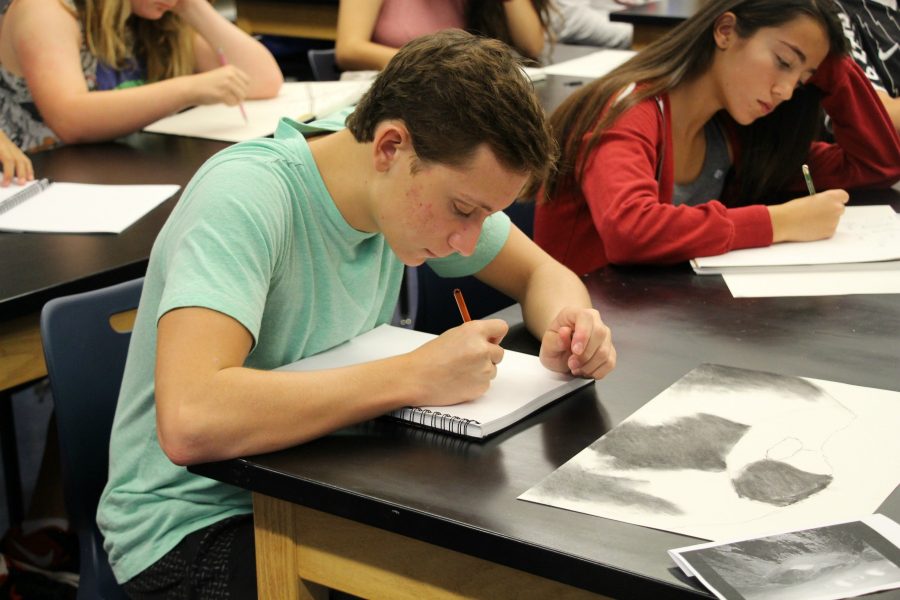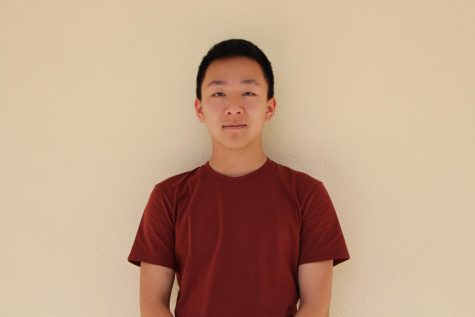Art Students Create Visual Journals for Mindfulness
“Forgiveness” is the key word of the day, and students in art teacher Christine An’s class begin to craft their wildly different interpretations of that one main idea. Only the sound of pencil strokes and brushes on paper interrupts the silence in the room as they sketch intently into their art journals.
“Art journaling is like writing a diary, except it’s in a picture form,” An said. “There are no specific rules or regulations, so they will pick a topic and start to create visual imagery in their sketchbook. If a student doesn’t have anything that comes to mind, a lot of times I have a prompt or keyword, so I will give them a word [or phrase] and they can go off of that.”
This new initiative introduced in September aims to reduce student stress, giving them the opportunity to slow down in their otherwise busy school days. Ever since she was in high school, An has understood the therapeutic value in visual journaling, and she hopes to share this appreciation with her students.
“The main goal [of art journaling] is stress reduction, self regulation, self awareness and healing,” An said. “[I] really heavily got into art when I was in high school because I realized that while making art, whether it [was] in class or on my own as like a journaling or doodling type of thing, always made me feel better. Sometimes words cannot fully express our experiences, so it helps people process stressful events by putting that down in an image and really exploring and releasing emotions involved in that event.”
Students often associate grades with stress, so An intentionally detaches the art journal assignment from any kind of point value.
“Students are so success driven [that] they think everything has to have a grade value,” An said. “[Students] really lose a sense of importance in the process of [creating art], and they’re just focusing on the final grade… The whole point of it is to not put point value grades on it so that students will learn to enjoy the creative process, so they’re learning how to do this for themselves.”
Since the assignment has no rigid structure or rubric, An believes that the visual journals often reflect a higher degree of creativity from students than in regular, graded art pieces. Instead of feeling constrained by the prospect of receiving a bad grade, students are expected to establish a personal connection to the creative process.
“You need to have this personal connection to motivate yourself to do a given task and to really foster a growth mindset, because without the personal connection, there’s no motivation,” An said. “I find that images [in the visual journals] are more fluid, more organic and more poignant than [graded drawings that come] out stiff because you’re thinking about what you can do to get an A.”
Art journaling is just one part in a larger movement toward student mindfulness. Although it’s recently come into vogue both in the school and the area, An insists that the appeal of mindfulness is not just a short-term trend.
“I feel like a lot of people are just realizing that [they have] always known [that mindfulness is important],” An said. “I think it’s just that we as a school decided to focus on it [more] this year.”
An and the other art teachers recently attended an all-day mindfulness workshop, in which they learned to create their own art journals. Because the teachers and students have had such a positive experience with the activity, An hopes to share art journaling with the entire school.
“We are in the process of exploring how we can help our students do more of this because all three of us teachers went to the workshop and we enjoyed it so much,” An said. “We’re [thinking about offering] a [similar] school wide workshop for interested students.”




